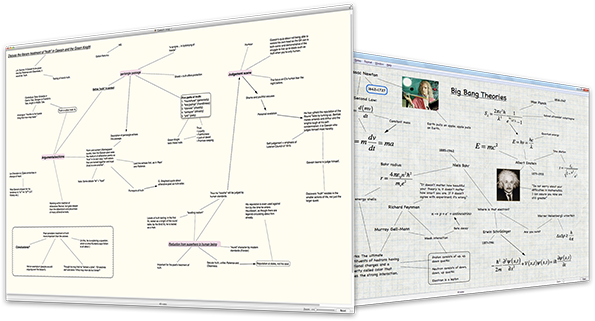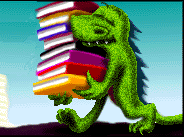Most students when working on a research paper, seminar style presentation or other major project begin by writing an outline. The problem with using outlining during the initial  planning stages is that it locks you into a linear flow pattern which can be like putting on blinders. A lesser number of students may use a mind mapping strategy which is more freeform although it does encourage starting from a central point. Enter Scapple, a software application that provides a totally freeform way to get ideas flowing. The Scapple canvas acts like a piece of paper on which you can write random ideas anywhere you wish without the necessity of making any connections during the creative thinking process. As development proceeds, lines can be added to connect ideas as shown in the image below from the Scapple website. The application allows the student to easily experiment with different idea connection patterns. Once a desired flow is obtained, the student can convert it to an outline if he/she wishes. For the last few years, my chemistry students have successfully used Scapple in the development of their senior seminars.
planning stages is that it locks you into a linear flow pattern which can be like putting on blinders. A lesser number of students may use a mind mapping strategy which is more freeform although it does encourage starting from a central point. Enter Scapple, a software application that provides a totally freeform way to get ideas flowing. The Scapple canvas acts like a piece of paper on which you can write random ideas anywhere you wish without the necessity of making any connections during the creative thinking process. As development proceeds, lines can be added to connect ideas as shown in the image below from the Scapple website. The application allows the student to easily experiment with different idea connection patterns. Once a desired flow is obtained, the student can convert it to an outline if he/she wishes. For the last few years, my chemistry students have successfully used Scapple in the development of their senior seminars.
Scapple is an inexpensive application available for both macOS and Windows from Literature and Latte. A regular license for either platform is $14.99 while an educational license is $12. Literature and Latte has a very lenient policy allowing a single license to be used on multiple computers as long as they are owned by the licensee.
If you think you have a use for such a tool, you should download it an try it out. Literature and Latte allows you to download a fully functional version of the application and use it for 30 days of actual use (not just a period of calendar days) which is more than enough time for you and/or your students to use it for organizing a project.


